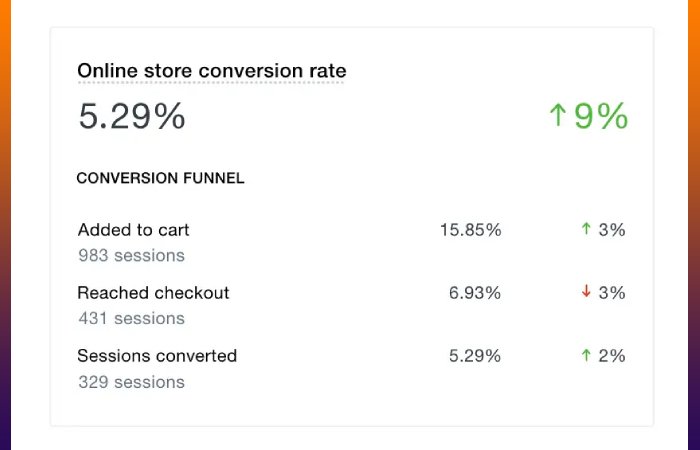How can you tell if your business will succeed? How can you tell if your marketing efforts are paying off? Metrics are the key to understanding whether or not your Shopify store will be profitable. This comprehensive list of metrics every Shopify store owner should know breaks down what each metric means, when it’s important to check it, and how to measure and improve it so that you see profits by the end of the year.
Table of Contents
Return on investment
One of the most important metrics you need to know to grow your eCommerce business is your return on investment (ROI). This metric measures how much profit you make from each sale, and it’s a critical number to track because it shows you whether or not your business is sustainable. There are a few different ways to compute ROI, but the most common is to take your total revenue from a given period of time and divide it by your total costs for that same period. This will give you your ROI percentage. Regardless of which method you use to calculate ROI, this is one metric every Shopify store owner should know to grow their eCommerce business successfully. You should also keep an eye on other metrics like average order value and conversion rate so that you can tailor your marketing efforts accordingly.
Conversion rate
No matter what business you’re in, understanding and tracking your conversion rate is critical to success. If you’re an eCommerce business, your conversion rate is a measure of how well your store is performing in terms of generating sales. There are several issues that can affect your conversion rate, such as the quality of your products, the design of your store, and the clarity of your messaging. But no matter what’s driving traffic to your store, there are a few key metrics you need to know to grow your eCommerce business. These 10 critical eCommerce metrics is a comprehensive guide to help break it down for you

Checkout abandonment rate
Your checkout abandonment rate is one of the most important metrics you need to know to grow your eCommerce business. This metric measures how many people start the checkout process on your website but don’t complete it. There are several reasons why someone might abandon their cart, including high shipping costs, a complicated checkout process, or not being able to find a coupon code.

Abandoned carts can be a major source of lost revenue for eCommerce businesses, so it’s important to keep an eye on this metric and work to decrease it.
Here are 10 critical eCommerce metrics that you should track:
- Checkout abandonment rate
- Shopping cart size
- Average order value
- Return rates
- Cost per acquisition (CPA)
- Cost per click (CPC)
- Cost per sale (CPS)
- Cart recovery rate
- Customer lifetime value
- Conversion rates
Shopping cart abandonment rate
Your shopping cart desertion rate is one of the 10 critical eCommerce metrics every Shopify store owner should know. This metric measures the percentage of people who add items to their cart but don’t complete the purchase. A high abandonment rate could indicate a problem with your checkout process, product pricing, or shipping costs. To lower your abandonment rate, consider offering free shipping, discounts, or other incentives to encourage people to complete their purchases.
Average order value
To calculate your AOV, simply take the total revenue from all orders in a given period and divide it by the number of orders placed. For example, if you had 100 orders in January with a total revenue of $10,000, your AOV would be $100. AOV is a valuable metric because it allows you to see how much each customer is spending on average. This number can be used to set goals and to benchmark your progress over time.
Traffic sources
You can get traffic to your store from a variety of sources, including paid ads, organic search, social media, and referrals. Knowing where your traffic is coming from is important so that you can allocate your resources accordingly. The most important thing is to track your progress over time so that you can see what’s working and what’s not.
Here are nearly of the most important metrics to track for your Shopify store:
- Number of visitors: This is a good metric to track overall growth. You can track this in Google Analytics.
- Number of pageviews: This metric tells you how engaged users are with your site. If you see a decline in this metric, it could be an indication that something is wrong with your site or that users are losing interest.
If you’re wondering if you have the tools to help track your visitors, this list of eCommerce tech you need to grow your business can serve as a reference.
Ecommerce sales by channel
A successful eCommerce business needs to track several metrics to identify areas of improvement and optimize its store for conversions. By understanding which channels generate the most sales, you can focus your marketing efforts on those channels and adjust your budget accordingly. The following are some key metrics every Shopify store owner should know:
- Number of visitors: This metric helps you understand how many people are coming to your site. You can track this number by using Google Analytics or another similar tool.
- Conversion rate: This metric measures how many visitors take a desired action on your site, such as making a purchase or signing up for a newsletter.
When it comes to understanding the performance of your Shopify store, there are a few key metrics you should always keep an eye on. By tracking your store’s traffic, conversion rate, average order value, and repeat customers, you’ll get a clear picture of how well your business is doing and where there’s room for improvement. And remember, don’t get too caught up in the numbers—use them as a guide to help you make informed decisions about your business.
Related Searches
shopify store login
shopify store example
how to find shopify stores
shopify app store
shopify stores dropshipping
top shopify stores
shopify store for sale
shopify stores clothing

